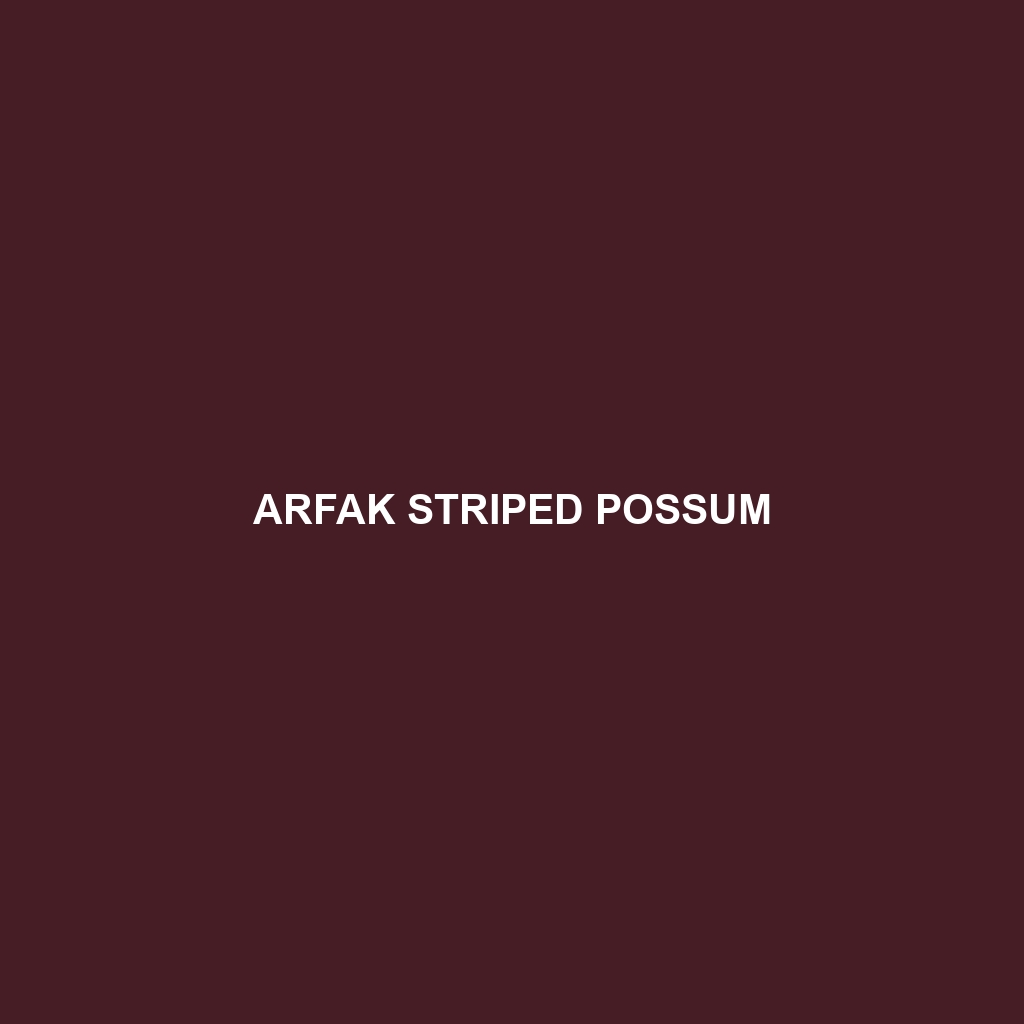Arfak Striped Possum: A Detailed Overview
The Arfak Striped Possum (*Dactylopsila megalura*) is a nocturnal marsupial native to the rainforests of New Guinea and parts of Indonesia. Recognizable by its distinctive black and white striping, this elusive creature is known for its unique feeding habits and fascinating adaptations. With a slender body and specialized features, the Arfak Striped Possum plays a crucial role in its ecosystem while captivating the interest of wildlife enthusiasts and researchers alike.
Physical Characteristics
Size: The Arfak Striped Possum measures approximately 25-30 cm (10-12 inches) in body length, with a tail that adds another 30-35 cm (12-14 inches). It typically weighs between 300-500 grams (10-18 ounces).
Coloration: The possum’s fur is predominantly black, adorned with striking white stripes running longitudinally from head to tail. This bold coloration serves as a form of camouflage among the dappled light of the rainforest canopy.
Special Features: One of the most notable physical traits of the Arfak Striped Possum is its elongated fourth finger, which it uses to extract insects and larvae from tree bark. Additionally, its prehensile tail aids in climbing and provides balance as it navigates the forest.
Behaviors
Social Interactions: Arfak Striped Possums are generally solitary creatures, coming together only for mating purposes. They are territorial and communicate through a series of vocalizations, scent markings, and physical displays.
Feeding Habits: These possums are primarily insectivorous, feeding on beetle larvae, ants, and other insects. Their elongated finger is an essential tool for foraging, allowing them to tap on tree bark to locate prey and then extract it with precision.
Ecological Roles: By controlling insect populations, the Arfak Striped Possum helps maintain the health of the forest ecosystem. Their foraging behavior also aids in the aeration of tree bark, which can benefit the overall health of the trees.
Habitats
Environment: The Arfak Striped Possum inhabits tropical rainforests, typically at elevations ranging from sea level to 1,500 meters (4,900 feet). They prefer dense, moist environments with a rich diversity of flora and fauna.
Shelter: These possums seek refuge in tree hollows or dense foliage during the day, emerging at night to forage. Their arboreal lifestyle demands a habitat with ample tree cover and vertical complexity.
Adaptations
Sensory Adaptations: Highly developed senses of hearing and smell allow the Arfak Striped Possum to locate prey and navigate through the dark forest. Their large eyes are well-adapted to low-light conditions.
Physical Adaptations: The elongated fourth finger and prehensile tail are crucial for foraging and climbing, while their strong limbs and claws enable them to grasp and manipulate objects with ease.
Conservation Status
Current Status: As of the latest assessments, the Arfak Striped Possum is not listed as endangered, but its habitat is under threat from deforestation and human encroachment. Continuous monitoring and conservation efforts are essential to ensure the survival of this unique species.
Fun Facts
Unique Feeding Technique: The Arfak Striped Possum’s feeding technique is reminiscent of the aye-aye of Madagascar, using its elongated finger to tap, locate, and extract insects from tree bark.
Nocturnal Lifestyle: Being nocturnal, they have adapted to a life of night foraging, which helps them avoid many diurnal predators.
Mimicry and Camouflage: The possum’s black and white stripes may mimic the appearance of dappled light through the forest canopy, providing an effective form of camouflage against predators.
By understanding the Arfak Striped Possum’s unique characteristics and behaviors, we can appreciate the intricate balance of the rainforest ecosystem and the vital role this small marsupial plays in it. Conservation efforts remain critical to preserving their habitat and ensuring their continued presence in the wild.
